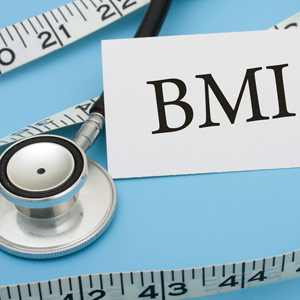
The new measure, called the Body Adiposity Index, or BAI, relies on height and hip measurements, and it is meant to offer a more flexible alternative to body mass index, or BMI, a ratio of height and weight, U.S. researchers said on Thursday.
BMI has been used to measure body fat for the past 200 years, but it is not without flaws, Richard Bergman of the University of Southern California, Los Angeles, and colleagues wrote in the journal Obesity.
While there are other, more complex ways to measure body fat beyond simply stepping on a scale, BMI is widely used both by researchers and doctors.
It is calculated by dividing weight in kilograms by height in meters squared. A person who is 5 feet 5 inches tall is classified as overweight at 150 pounds (68 kg) and obese at 180 pounds (82 kg).
But there is a lot of wiggle room in that calculation.
For example, women and men with the same BMI might have very different levels of extra flab. BMI numbers cannot be generalized across different ethnic groups or used with athletes, who have extra lean body mass.
The team made the index using data from a Mexican-American population study. They confirmed the scale's accuracy using an advanced device called a dual-energy X-ray absorption or DEXA scanner. Tests in a study of African Americans showed similar findings, suggesting BAI can be used across different racial groups.
BAI is a complex ratio of hip circumference to height that can be calculated by doctors or nurses with a computer or calculator.
The team says BAI still needs some fine tuning, and they still need to test it among whites and other ethnic groups, but they think it has promise as new tool, especially in remote settings with limited access to reliable scales.
"After further validation, this measure can be proposed as a useful measure of percent fat, which is very easy to obtain. However, it remains to be seen if the BAI is a more useful predictor of health outcome, in both males and females, than other indexes of body adiposity, including the BMI itself," the team wrote.
Obesity has become a global epidemic, with more than half a billion people, or one in 10 adults worldwide, considered to be obese - more than double the number in 1980. Obesity-related diseases account for nearly 10 percent of U.S. medical spending, or an estimated $147 billion a year.
Would you use this new method? Tell us in the box below.
BMI has been used to measure body fat for the past 200 years, but it is not without flaws, Richard Bergman of the University of Southern California, Los Angeles, and colleagues wrote in the journal Obesity.
While there are other, more complex ways to measure body fat beyond simply stepping on a scale, BMI is widely used both by researchers and doctors.
It is calculated by dividing weight in kilograms by height in meters squared. A person who is 5 feet 5 inches tall is classified as overweight at 150 pounds (68 kg) and obese at 180 pounds (82 kg).
But there is a lot of wiggle room in that calculation.
For example, women and men with the same BMI might have very different levels of extra flab. BMI numbers cannot be generalized across different ethnic groups or used with athletes, who have extra lean body mass.
The team made the index using data from a Mexican-American population study. They confirmed the scale's accuracy using an advanced device called a dual-energy X-ray absorption or DEXA scanner. Tests in a study of African Americans showed similar findings, suggesting BAI can be used across different racial groups.
BAI is a complex ratio of hip circumference to height that can be calculated by doctors or nurses with a computer or calculator.
The team says BAI still needs some fine tuning, and they still need to test it among whites and other ethnic groups, but they think it has promise as new tool, especially in remote settings with limited access to reliable scales.
"After further validation, this measure can be proposed as a useful measure of percent fat, which is very easy to obtain. However, it remains to be seen if the BAI is a more useful predictor of health outcome, in both males and females, than other indexes of body adiposity, including the BMI itself," the team wrote.
Obesity has become a global epidemic, with more than half a billion people, or one in 10 adults worldwide, considered to be obese - more than double the number in 1980. Obesity-related diseases account for nearly 10 percent of U.S. medical spending, or an estimated $147 billion a year.
Would you use this new method? Tell us in the box below.




 Publications
Publications
 Partners
Partners










